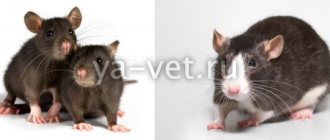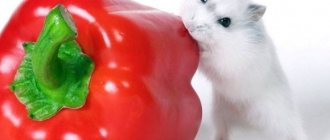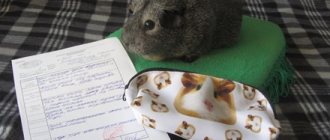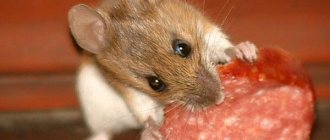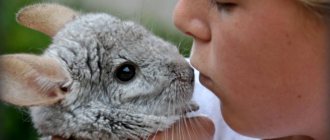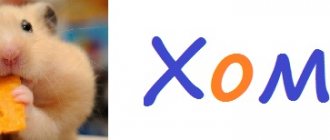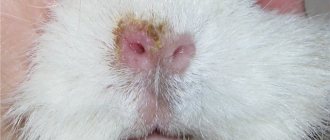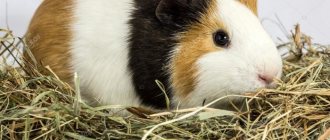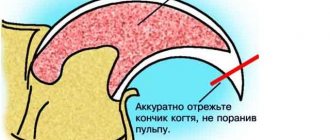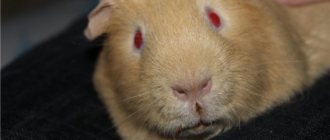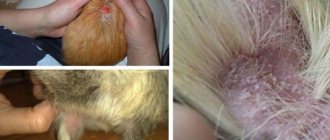The quality of nutrition largely determines the health and life expectancy of an animal. Before offering your pet a new product, in our case potatoes, a caring owner will ask himself whether hamsters can have potatoes. There is no definite answer to this question, since this vegetable can either be useful for the animal or harm it. Let's consider all the options.
How are potatoes good for hamsters?
In fact, potatoes are a natural food for hamsters. Therefore, domestic rodents are happy to eat pieces of tubers placed in the feeder. Wild hamsters living in natural conditions build huge storerooms underground in which they store supplies for the winter. Potatoes can often be found among a variety of vegetables in burrows. This high-calorie, starchy root vegetable helps wild rodents survive the cold season of the year. Raw tubers contain many substances useful for animals: ascorbic and folic acid, niacin, potassium, calcium, fluorine, B vitamins. Hamsters need all these elements to maintain normal functioning of the body.
Therefore, the question of whether hamsters can eat potatoes should be given a positive answer. Animals that often eat root vegetables almost never suffer from vitamin deficiency, diseases of the circulatory system, or constipation. Raw potatoes improve the functioning of the intestines, stimulate digestion, and reduce the acidity of gastric juice. It is especially recommended to treat pregnant females with the vegetable. Potatoes prevent the occurrence of various pathologies in embryos developing in the womb. It is useful to give the root vegetable to sick animals to improve the physical condition of the body and ease the symptoms of the disease.
Chemical composition, microelements and characteristics of potatoes
Potato is an annual tuberous plant, food and agricultural crop . Serves as a raw material for the food, chemical, and textile industries.
Depending on the nutritional composition of the tubers, the vegetable is divided into groups:
- dining room;
- stern;
- technical;
- universal.
100 g of product contains 17.5 g of carbohydrates . This represents about 89% of the total energy from the serving.
Calorie content - 77 kcal.
Basic composition in 100 g:
- fats - 0.09 g;
- proteins - 2.05 g;
- carbohydrates - 17.49 g;
- water - 79.25 g;
- ash - 1.11 g.
The root vegetable contains fat-soluble vitamins - beta-carotene, B and K. Water-soluble vitamins are represented by vitamins C, B1, B2, B3 (PP), B4, B5, B6 and B9.
Contains raw potatoes:
- calcium;
- iron;
- magnesium;
- phosphorus;
- potassium;
- sodium;
- zinc;
- copper;
- manganese;
- selenium.
Can hamsters eat raw potatoes?
A good owner is always concerned about whether the hamster can eat raw potatoes. There is no need to doubt: the vegetable is useful for a small animal. Potatoes not only contain a large amount of vitamins and minerals, but also allow the rodent to sharpen its teeth. Therefore, potato tubers, pieces of fresh carrots and other hard vegetables should always be in the feeder. If the animal does not have the opportunity to grind its incisors on rough food, then they grow to an unnatural size and deform the jaw. The raw root vegetable is rich in ascorbic acid, which is important for preventing the development of vitamin deficiency. A pet that regularly eats potatoes is cheerful and active and feels good.
But, despite the significant benefits of potatoes for the health of the animal, you need to treat your hamster with a raw vegetable with caution. The root vegetable contains a lot of starch - a polysaccharide consisting of glucose molecules. This simple carbohydrate, when consumed in excess, inevitably leads to obesity. Therefore, you should not give potatoes to an overweight rodent. You should not feed vegetables to an animal with normal body weight, otherwise the pet will quickly gain weight. Nutrition should be moderate and balanced. You should not treat your animal to potatoes that have turned green from lying in the light for a long time. Green tubers accumulate solanine, a toxic substance that negatively affects the functioning of the nervous system and can cause diarrhea in rodents.
Other vegetables
Don't forget to supplement your pet's diet with other healthy vegetables. They will not be among the basic ones, but if consumed 1-2 times a week they will bring tangible benefits to his body.
Eggplant
Recommended for fresh consumption, it is usually alternated with other vegetables, offering the hamster no more than 50 grams at a time. When purchasing, avoid overripe fruits - eggplants are useful because they restore the water-mineral balance in the animal’s body; unripe and stale fruits are not suitable for this.
Pumpkin
Contains a lot of fiber, beta-carotene, good for the eyes, phosphorus, iron, potassium. Useful as a treat even for overweight animals and diabetics. But, unlike carrots, it is not suitable as a daily food.
Pumpkin should diversify the diet, and not become its basis; it is useful in fresh, stewed, boiled form. Be sure to have no peel - it is cut off in a thick layer.
Zucchini
It is one of the dietary products recommended fresh without peel. For sick, weakened, young animals (up to 6 weeks), it is useful to puree it with a blender.
Zucchini and pumpkin seeds deserve special attention. This healthy treat will help the rodent cope with parasites, as it has anthelmintic properties.
Do hamsters eat boiled potatoes?
Many rodent breeders doubt whether hamsters can eat boiled food, including potatoes. In fact, small pets enjoy feasting on both raw and cooked foods: pasta boiled without salt, pumpkin, carrots, and potatoes. But we must remember that the eyes growing on potato tubers should not be given to animals, as they are extremely poisonous. Animals can be poisoned and seriously injured. Therefore, only thoroughly peeled potatoes are allowed to be placed in the feeder. Boiled vegetables are nutritious and healthy food for rodents. It contains a lot of riboflavin, pyridoxine, pantothenic acid, biotin and other vitamins. Potatoes must be included in the diet of furry pets to protect them from diseases of the cardiovascular system.
The hamsters' menu must include a variety of boiled vegetables, rich in vitamins and minerals, easily digestible, and helping to improve digestion. Animals love soft and tasty boiled or baked potatoes, but you cannot feed them. Boiled root vegetables contain even more starch than the raw product. Therefore, overly fat animals should not be given potatoes. But it is recommended to treat rodents who, for some reason, are underweight, and old people who have difficulty gnawing solid food with boiled vegetables. It is strictly forbidden to feed your pets fried potatoes. When preparing food for hamsters, do not use salt, spices, butter or vegetable oil. You should not put the entire boiled tuber in the feeder at once; it is better to give food to small pets in small portions.
How to give correctly
As mentioned above, potatoes are safe for almost all breeds of hamsters, but this rule only applies if a few rules are followed. Only in this case can an optimal balance be achieved between starches, fats, vitamins and minerals, and this will ensure not only safety for health, but also help extend the lifespan and youth of the rodent.
To do this, you just need to adhere to the following requirements:
- raw vegetables are given only in small pieces and always without peels and sprouts;
- preference should be given to boiled potatoes, they should contain at least 60% of the total volume of the vegetable;
- give the tuber no more than once a week, the maximum portion for an adult animal should not exceed 30 g;
- Before giving your hamster raw slices of tubers, it is recommended to soak them in clean cold water for 1–2 hours, changing the liquid periodically. This will remove excess starch from the pulp, as well as accumulated nitrates and other toxins.
Important! It is forbidden to cook and feed green potatoes raw; they contain the dangerous toxin solanine, which even in small doses can lead to the death of a hamster.
Is it possible to treat Djungarian hamsters with potatoes?
Djungarian hamsters are gentle and sensitive creatures, their body is weakly resistant to many diseases. Fluffy pets often suffer from diabetes caused by excess weight, which greatly upsets their owners. To ensure that a Djungarian baby does not suffer from obesity and always remains cheerful and active, he must adhere to a fairly strict diet. Limiting heavy and high-calorie foods on the menu allows you to make your rodent’s life longer and more fulfilling, and reduce the risk of diabetes. Potatoes contain a large amount of starch, significantly increase the concentration of sugar in the blood, and provoke an increase in body weight. Therefore, it is better to avoid feeding Djungarian hamsters raw and especially boiled potatoes.
Potato damage
If there is a high content of solanine in tubers, there is a risk of intoxication of animals.
The severity of poisoning depends on the amount of potatoes eaten and on the physiological characteristics of the animals.
For guinea pigs
Veterinarians consider the large amount of starch to be the main disadvantage of potatoes.
If your pet has a healthy digestive system and feels good after complementary feeding, they include raw vegetables in their diet, in small quantities and infrequently.
If there is an excess there are consequences:
- obesity;
- liver enlargement;
- chronic diarrhea;
- hepatitis.
For hamsters
strictly forbidden to give raw potatoes to Djungarian hamsters .
The digestive system of this rodent is particularly sensitive. A small amount of solanine in the product will cause intoxication.
Djungarian hamsters are recommended boiled potatoes in moderation in combination with other foods.
For livestock
The tops and tubers of the vegetable are used to feed farm animals
A small amount of solanine is found in potato tops and new potatoes . Its content increases with prolonged and improper storage.
Tubers left in the sun for a long time pose a great danger to livestock. Animals that graze in these fields after harvesting potatoes are at great risk of poisoning.
Important! Even the water in which the peels with shoots or greened tubers were boiled is dangerous. Giving animals such a decoction is strictly prohibited.
What potatoes should you not give to hamsters?
Green potatoes pose a great danger to hamsters. The root crop turns green from lying in the light for a long time. Tubers illuminated by the sun begin to produce the poison solanine, which is extremely harmful to humans and especially to small animals. It should be noted that in small doses, solanine does not have a negative effect on the body, sometimes even stimulates digestion and improves intestinal function. But in large quantities, the toxin causes significant damage to health. It is clear that it is enough for a tiny animal to eat a small piece of green potato to become poisoned. You can determine that a vegetable contains solanine not only by color, but also by taste. Poisonous potatoes are bitter and cause a sore throat when swallowed.
It is not advisable to treat hamsters with old and sprouted potatoes. Poor-quality and spoiled products often cause problems with the digestive tract. It is very useful to give rodents potatoes along with cucumbers, parsley, and dill. Fresh greens must be included in the diet of small pets. It is strictly forbidden to feed animals fried foods, potatoes with salt, seasonings, fat, sauce and other additives. Salt and fat are not just harmful, but even dangerous foods for rodents.
Daily diet for a furry pet
Angoras are more picky about the quality of food than dwarfs or other dwarf rodents. Their daily diet should include not only cereal grains (oats, corn, millet) but also vitamins. Pet stores sell special food for pets, which contains a complex of useful substances. However, your pet can also get vitamins from fruits and vegetables, which it is advisable to include in his daily food.
Angora hamsters readily eat carrots, pumpkin, apples, lettuce and dandelion leaves, dill, and parsley. Rodents will also get the necessary substances from sunflower seeds and nuts. To replenish protein reserves, your pet can be fed with boiled liver and boiled chicken meat. The main thing is that all the food in the hamster's feeder is fresh.
You should feed your pet no more than twice a day. It is advisable to replenish the supply of drinking water in his home approximately once every two days.
From time to time it is necessary to conduct an audit of the fluffy's house and check what he has brought into his pantry. There should not be too much perishable food in a hamster’s diet, otherwise the consequences may be disappointing. A long-haired rodent can not only stain its coat with vegetables or fruits that have begun to rot, but also become seriously ill.
To avoid unpleasant consequences, it is necessary to exclude potatoes, cabbage leaves, garlic, onions, and citrus fruits from the Angora hamster’s diet. It is advisable to avoid various exotic fruits and fruits with seeds.
Since Angora hamsters are prone to obesity, their feeding should be done under the supervision of the owner. In the house the animal should have many accessories for active body movements.
Features of feeding different breeds
Djungarian and Roborovsky hamsters are small
Accordingly, their feeding will be different: portions are smaller than for larger breeds, caution increases. The body of Dzungarian hamsters is even weaker than that of larger hamsters
They are prone to diabetes, so sugar beets are contraindicated both raw and boiled. The baby can easily eat other varieties of this vegetable, however, the portion of the root vegetable should not be larger than the nail on the little finger. Just like other hamsters, dwarf hamsters should not be given this treat often. 1-2 times a week will be enough.
Syrian hamsters are larger in size. Not much, but still. These rodents can be given any variety of beets. But don't forget that everything is good in moderation
It is very important not to overfeed your hamster with beets - they have a laxative effect, which can cause diarrhea
If you have your own garden, you can even please your pet with beet tops. You need to wash it well first so that no dirt remains on it.
However, caution must be exercised here as it is unknown how the hamster’s body will react to this. Give me some tops and watch
If the pet likes it and everything is in order with health, then you can safely feed the tops as a variety of diet.
Pregnant hamsters should be given beets once a week, no more. It is better to exclude the sugar variety, because it can adversely affect the development of the fetus.
Chicken or quail
Chicken yolk contains vitamins A, D, and E, polyunsaturated fatty acids. Vitamin D promotes the absorption of calcium, which strengthens bones. There is as much of it in eggs as there is in fish oil. The yolk contains iron.
Quail eggs contain five times more potassium and iron, 2.5 times more vitamins B1 and B2, vitamin A, niacin, phosphorus, copper, cobalt, and other amino acids.
If you have the opportunity to buy quail, because they are more expensive than chicken, you need to choose them. Quail eggs contain much more useful substances than chicken eggs. They have high nutritional value, quickly restore immunity after illness, strengthen blood vessels, and do not cause allergic reactions.
Although the ratio of beneficial nutrients in quail and chicken eggs is different, remember - they are all useful and valuable foods for a hamster.
What to buy to please your pet
Pet stores offer a wide range of treats for hamsters. But you shouldn’t take the first product you come across. Carefully study the composition of the product before purchasing. Unscrupulous manufacturers add ingredients that are harmful and even dangerous to animals. The treat should not contain: salt, sugar, fats, artificial additives (flavors, dyes, taste enhancers). Consider your pet's breed when choosing treats. For example, some foods allowed for Syrians are not suitable for Djungarians.
If the product contains prohibited components, the hamster may be poisoned. The functioning of the digestive tract will also be disrupted, which will negatively affect the condition of the animal.
Hamsters may refuse treats. Monitor your pet's reaction and remember what the rodent ate with pleasure and what it preferred to leave untouched. Taste preferences depend on the character and breed of the hamster.
It is recommended to choose treats consisting of nuts, sunflower seeds, dried vegetables and fruits, and banana chips. Such products are a favorite treat for hamsters.
The stores offer:
- Various mixtures with berries, fruits and grains. Additionally, the mixtures include vitamins and healthy additives.
- Hamster sticks consisting of grains, fruits, vegetables and herbs. The range of sticks is quite diverse.
- Tartlets made from unleavened dough with various fillings.
- Treats in hemp are not only healthy and tasty food for rodents, but also entertainment.
- Yummy in the shape of a labyrinth or a house. The hamster will be able to have a snack and play at the same time.
